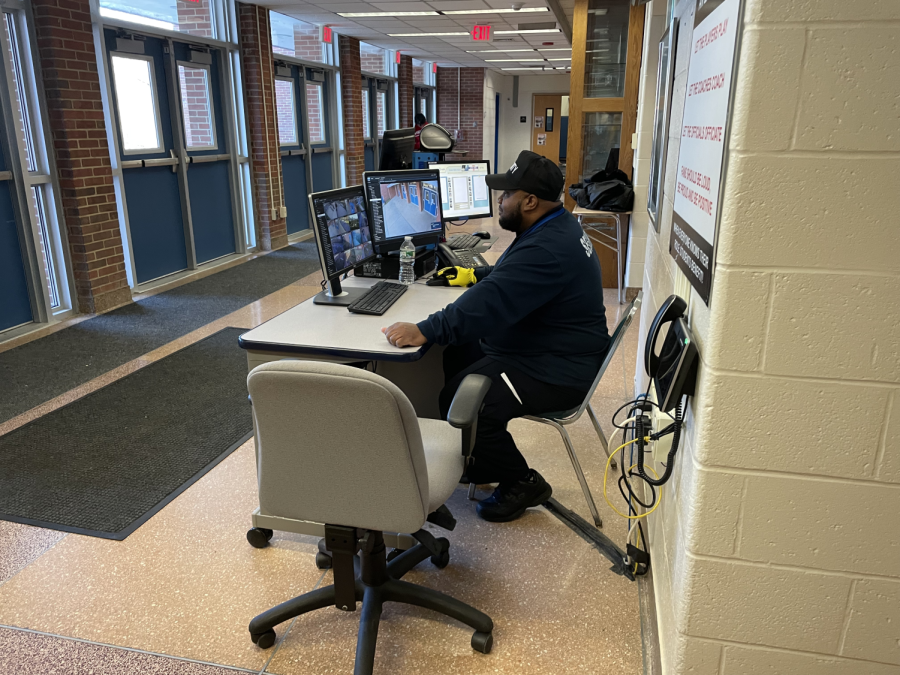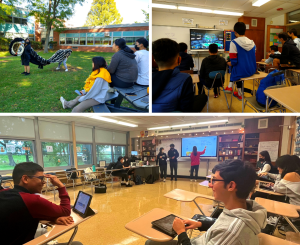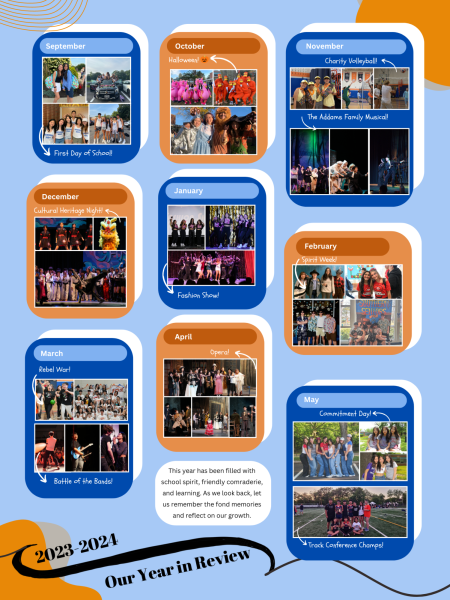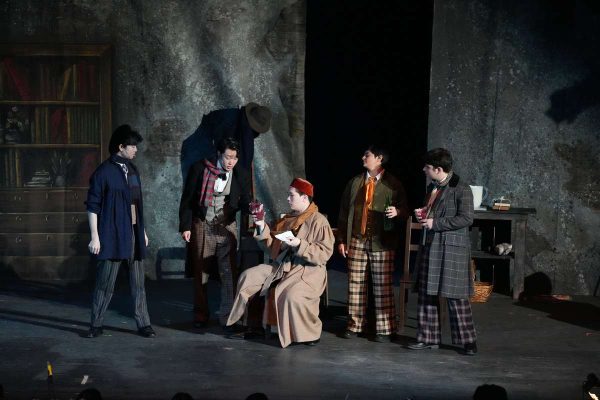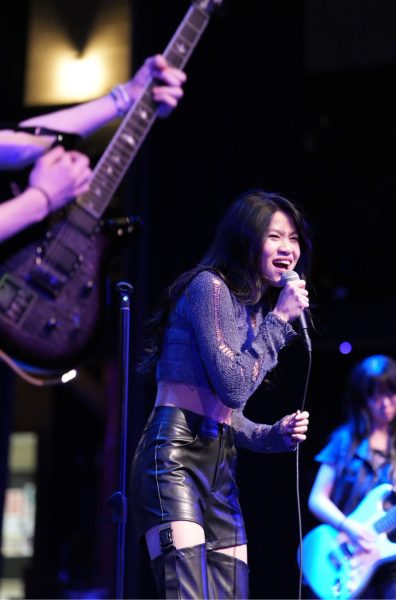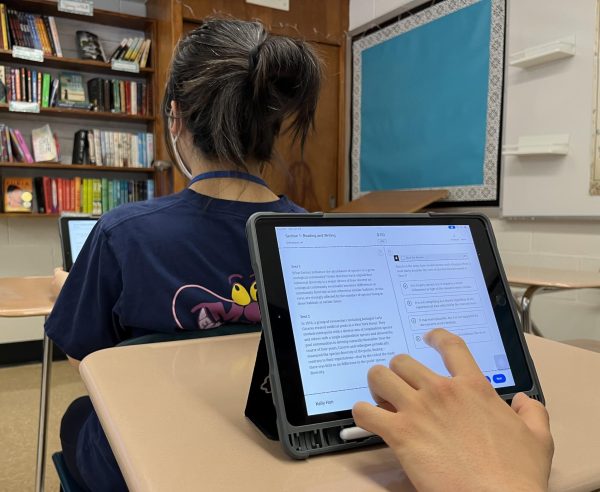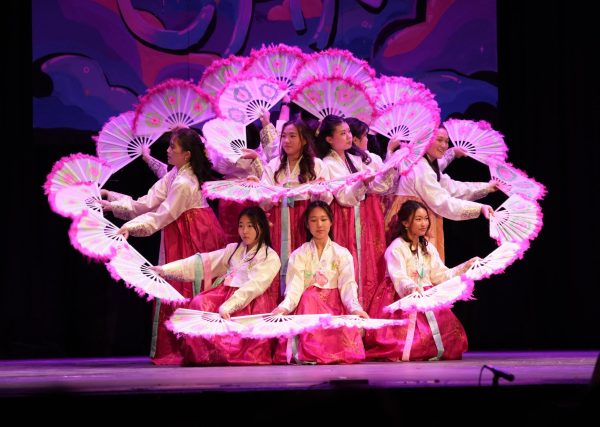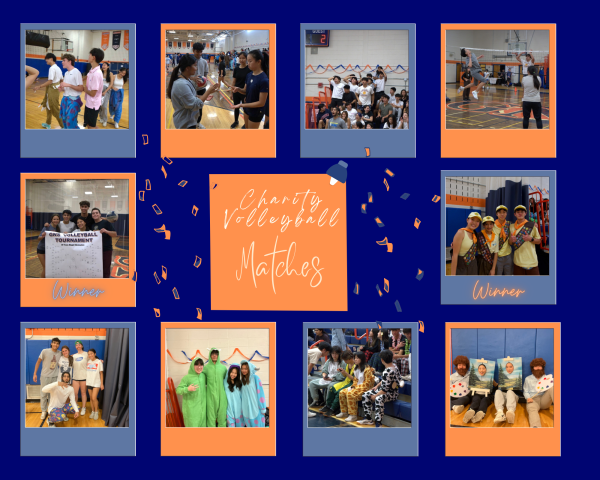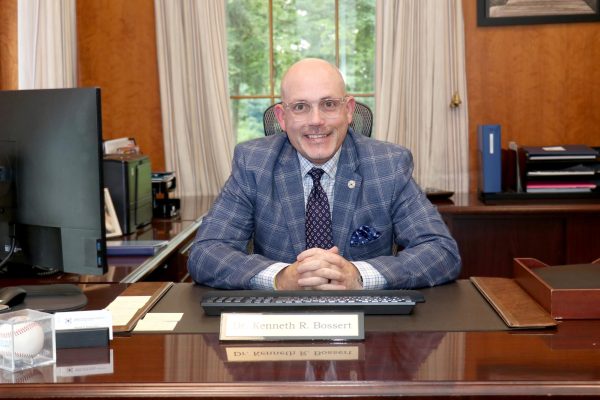Reinforcement and Revision: Understanding South High’s Security
Improved GNS Security: A security guard monitors the East Gym entrance to ensure the safety of students.
February 27, 2023
On December 16, 2022, Great Neck South High School experienced an unexpected security breach. Following the subsequent investigation, the GNSHS and GNPS administrations reexamined our security policies to ensure the safety of our community. “Our administrative responsibility is to keep everyone as safe and secure as possible, and I take that very seriously,” Principal Dr. Christopher Gitz said.
During the COVID-19 pandemic, many of our pre-existing security measures were less strictly enforced because concerns, and therefore resources, lay elsewhere: protecting students from the more imminent threat of the pandemic. Routine drills like lock-down drills stopped completely. Additionally, rules our school always had, such as a ban on food deliveries during school hours, were loosened to allow students to eat without going to the crowded cafeterias. Now, these practices have returned alongside full in-person learning—and for good reason. Like with everything done at South, these security measures exist to ensure the continued safety of our community. “Letting strangers into the buildings is a security issue,” said Mr. Bill Castoro, the supervisor of security for the GNPS district. “We don’t know who the Uber [or DoorDash] drivers are.” In addition to the pre-COVID rules, the administration has also hired new security guards and added new checkpoints to monitor all entrances and exits to the building, particularly in the East and West Gyms.
These changes haven’t gone unnoticed. Mr. Michael Moran noted, “I appreciate the added security at the main lobby, because I know that’s a place that frequently has a higher population and probably needs the security there to keep an eye [out].”
GNSHS has enforced added security measures to strengthen the safety of our school community. Chief among them is the requirement that all students wear visible IDs at all times. Students may be resistant to this policy because it feels like “a burden,” or it’s “embarrassing” to display their school photo. Senior Luke Goodman commented, “I think some kids are embarrassed of their pictures, [and] I think that is a burden.”
What is important for students to understand, though, is that these IDs help faculty and staff identify outsiders. Especially in the event of an emergency, first responders can “quickly see who belongs and who doesn’t [in our school],” according to Mr. Castoro.
The GNSHS administration and teachers encourage students to play an active role in maintaining a safe school environment. “I don’t think any of these rules are arbitrary or useless,” Ms. Rita Flaherty said. “So why not [follow security policies] for your classmates? If everybody [wears their IDs], nobody will feel left out.” Teachers are also expected to wear their IDs at all times so they can be easily identified in case of an emergency. “I’m in favor of anything that’s going to help the administration keep students safe,” Ms. Flaherty said. “I do consider it my job to keep students safe.”
Teachers have seen students complying with these measures in and outside of the classroom. “From my experience, students have been incredibly cooperative and respectful about why [security measures are] in place,” Ms. Michelle Sorise said.
In addition to these changes, all school community members can contribute to school safety. Mr. Moran has noticed, “Students are still letting people into the building…[which] is a danger to us all.” The GNSHS administration continues to send emails reminding students about our safety protocols, including how no one should “open any doors for anyone. All visitors must enter through the main entrance.”
Security policies will always be somewhat fluid. The District is constantly “researching what’s going on, looking at [their] policies, and making recommendations and changes,” Mr. Castoro said. Going forward, Mr. Castoro emphasized that “the most important thing is that students be the eyes and ears for security because there are more students than security guards.” If students see someone or something that is out of place, Mr. Castoro advises students to “inform security or anyone in the building like staff or administration so we can address it.”
Mr. Moran compares students’ responsibilities to the “see something, say something” campaign in the subway system. “Don’t see it as ‘It’s not my problem,’” Mr. Moran said. “No, it is your responsibility.”
During the third quarter, students can expect to hear from school administrators in their classrooms about these security practices and other initiatives occurring in the spring. “We have an incredible student body,” Dr. Gitz said. “I can’t thank our students, faculty, and staff enough for their understanding and their willingness to work together and move forward.”

